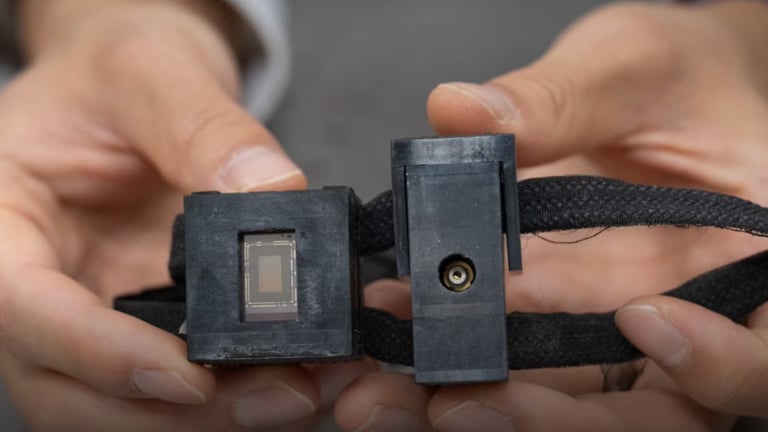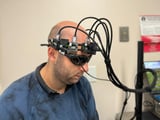Revolutionary Headset Uses Laser Technology to Noninvasively Predict Stroke Risk
October 1, 2024
Researchers from Caltech and USC have developed an innovative headset-based device that can noninvasively assess stroke risk by monitoring changes in blood flow.
This device employs a laser-based technology known as speckle contrast optical spectroscopy (SCOS) to measure blood flow and volume by analyzing light scattered by blood vessels in the brain.
During the assessment, the device monitors changes in brain blood flow and volume when a patient holds their breath, providing a non-invasive method to evaluate stroke risk.
In a study involving 50 participants, those identified as high-risk for stroke exhibited greater changes in blood flow during breath-holding exercises compared to their low-risk counterparts.
The findings indicated that the higher risk group had a higher flow-to-volume ratio, suggesting stiffer blood vessels and an increased likelihood of stroke.
Stroke is a major health concern, affecting nearly 800,000 Americans annually and serving as a leading cause of long-term disability due to reduced blood flow from artery blockages or ruptures.
Further research is being conducted at a hospital in Visalia, California, with plans to incorporate machine learning for data analysis and conduct a clinical trial over two years.
Future plans include pursuing clinical trials to make this headset available for stroke risk screening in medical facilities, potentially transforming standard practices.
Participants were categorized into low and high stroke risk groups using the Cleveland Stroke Risk Calculator, allowing for a comparison of traditional assessments with the device's measurements.
The long-term goal of this technology is to not only screen for stroke risk but also to identify specific areas in the brain where a stroke may have occurred.
Eventually, the device aims to detect the precise location of a stroke within the brain, enhancing its utility in clinical settings.
Current diagnostic tools like CT scans and MRIs are invasive and do not predict strokes before they occur, highlighting the significance of this new non-invasive approach.
Summary based on 4 sources
Get a daily email with more Science stories
Sources

ScienceDaily • Sep 30, 2024
New laser-based headset can measure blood flow, assess risk of stroke
Medical Xpress • Sep 30, 2024
Device offers first affordable, portable method for differentiating stroke risk based on physiological conditions
ExtremeTech • Oct 2, 2024
New Laser Headset Assesses Stroke Risk In Real Time
New Atlas • Oct 1, 2024
Laser headband non-invasively IDs stroke risk in real time